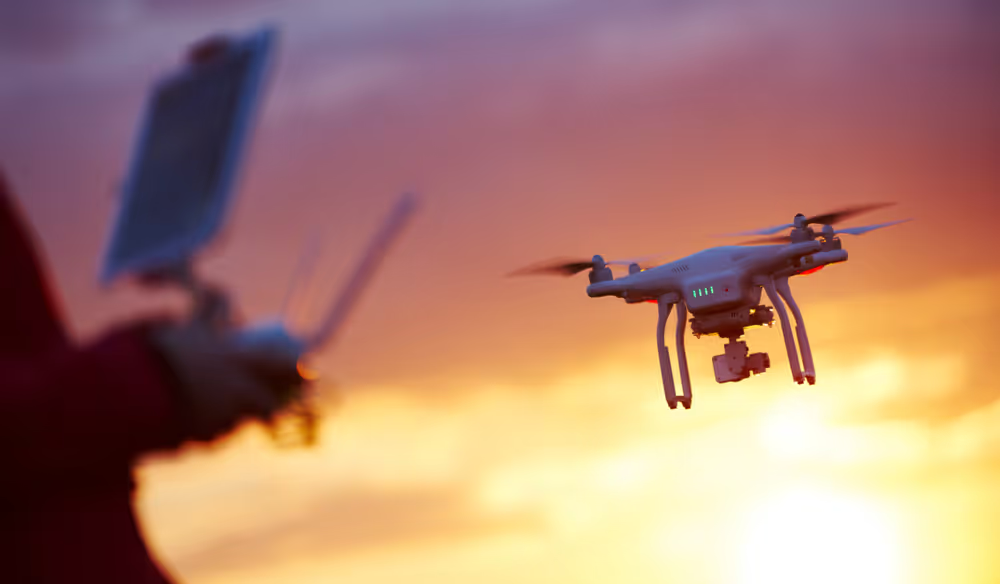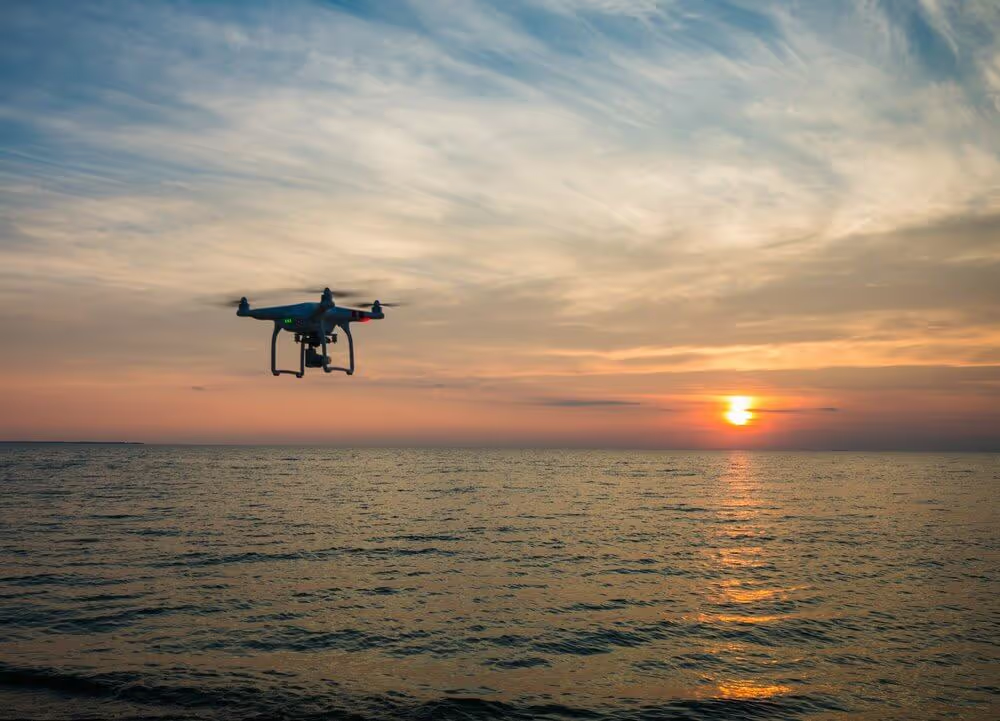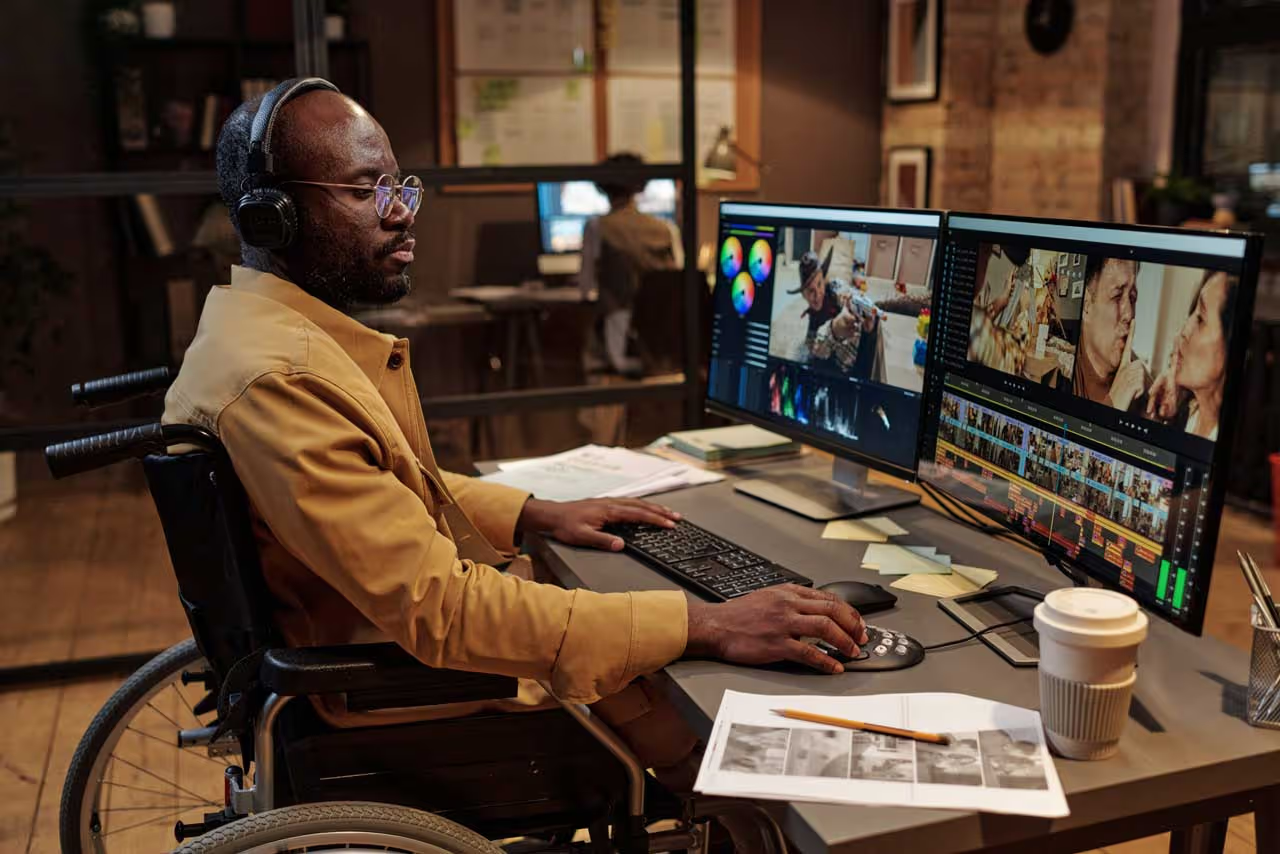Table of Contents
Do you ever feel like your aerial videos are a bit boring and wish there was a way to make them more exciting? Well, creating amazing drone shots isn't as difficult as it may seem. Here, we've got six simple and six more advanced tips for shooting aerial videos that will make your footage really stand out! And, just to make things even better, we've listed some drones that can take your aerial videography to a whole new level.
Drones have completely changed the game when it comes to aerial videography. They give storytellers incredible tools to capture breathtaking shots that add a whole new dimension to video storytelling. DJI's drones, in particular, provide unique perspectives that bring depth, scale, and visual appeal to stories. These technological wonders let videographers push their creative limits, opening up fresh possibilities for dynamic, cinematic, and immersive storytelling.
Why Shoot Video with A Drone?

Let's break it down before we dive into tips for beginners venturing into drone videography. Drones have become increasingly popular for photography, and they offer several advantages when it comes to making videos too.
- Access Hard-to-Reach Areas: Drones make it possible to reach places that are difficult or even impossible for humans or traditional filming equipment. Think of high spaces or areas blocked by large obstacles—drones can easily navigate these spaces, providing unique filming opportunities without putting the operator at risk.
- Capture Stunning Perspectives: Shooting with a drone offers a completely different viewpoint. Drones can film in places and angles that are beyond human reach, giving you perspectives that are rarely seen in everyday life. Aerial shots, for instance, provide bird's eye views that are typically only possible from an airplane or while skydiving.
- Foster Innovation: The ability to film from great heights sparks creativity and innovation among visual artists, photographers, and filmmakers. Drones grant instant access to shooting from elevated positions, encouraging experimentation and the creation of truly unique images.
- Boost Business Growth: Drone videography and photography have become increasingly popular. Clients seeking services for events like birthdays, weddings, or commercial shoots often request aerial shots. If you run a photography or videography business, learning drone shooting can significantly elevate your services and attract more customers.
Considering capturing breathtaking aerial shots? Think about renting a drone to enhance your videography business. With a variety of models available, you can easily find the perfect drone to meet your needs and take your footage to the next level.
Tips to Improve Drone Videography Footage
Plan Properly
Planning enables you to work and film in a smart way, helping you figure out everything you need before going out. By planning, you avoid flying blindly and being caught unprepared by unexpected situations.
Understand your equipment's scope and limitations. Know the brand and model of your drone, understanding its capacity, capabilities, and limits to maximize its use.
- Visualize the shots you want to capture: Think ahead about where you want to start and end your shot, considering the area you plan to capture, the best angle, and the natural lighting. Determine the perfect time of day to bring your vision to life.
- Plan your flight: Estimate the duration and number of shots needed. Survey the shooting area to identify factors, limitations, and potential influences on your video. Knowing the size and scope helps you manage your battery life and prioritize areas and shots.
- Anticipate the weather: Weather plays a vital role in drone photography, so check the forecast before scheduling your shoots. This way, you can avoid unnecessary attempts in unfavorable conditions.
- Create a flight map: Develop a vision for your drone video shoot through a flight map or storyboard. This plan illustrates your intended drone path, takeoff and landing points, direction, and preferred time of day.
- Conduct a pre-flight check: Before heading to the location, run through a checklist to ensure all necessary equipment is complete, your drone and camera are charged, gear is clean, and spare batteries are packed. Recheck your list before leaving to avoid missing supplies.
Remember, as a beginner, planning ahead and working smart can accelerate your progress. Fewer mistakes will give you more time to learn new techniques instead of fixing errors. Consider exploring online media courses to expand your knowledge.
Take it nice and slow
Many beginner drone videos tend to be shaky and jerky. If you want your aerial shots to look more pro and like scenes from a movie, the key is to keep it slow. Think about those fancy films with their smooth and unhurried aerial views—that's the vibe you're aiming for.
- Keep your hand steady: The trick here is to make gentle and smooth moves with your controls. Don't go too crazy on the remote; avoid sudden jerks or sharp actions. This also goes for your camera—no abrupt motions, please.
- Ease up: While the temptation might be to speed up your drone video, taking it slow and steady actually boosts the cinematic feel. It gives viewers the sense that you're shooting from a larger perspective, like a helicopter soaring gracefully.
- Plan it out: To ensure smooth and steady transitions, know what to expect when your drone takes flight. Being aware of your surroundings helps you avoid unexpected obstacles or landmarks that could lead to sudden moves.
Also read: Tips and Tricks for Editing Videos Like a Professional
Practice flying
If you're just starting out, honing your flying skills is a good idea. While experience with a basic drone helps, filming with a drone comes with its own set of challenges.
Here are some drone video tricks to practice for better results:
- Combine movements for a multi-dimensional effect, like descending while moving backward.
- Try strafing—moving sideways—instead of just going forward and backward. It adds different angles to your shots.
- Experiment with orbiting your drone. Just be sure not to spin too quickly.
- Do a fly-over. Focus on a subject on the ground and move the drone over it, keeping it in the spotlight.
- Practice coordination by tracking moving objects, like cars or runners. Following a moving subject or letting it follow you with the camera focused on it is a crucial skill for drone videographers.
Master your video skills

Remember, when you're operating a drone, it's not just about flying—it's about capturing footage in the air. While you may nail down all the different moves for various drone video effects, don't forget about the quality of your video.
Make sure your videography skills match your flying prowess. Seasoned videographers offer these drone video tips:
- Set everything manually instead of relying on auto mode. Auto mode can be a disadvantage because changes in light and atmosphere can lead to sudden adjustments, making your video look unnatural or inconsistent.
- Use tripod mode to slow down your drone's response. Keep it slow and steady to minimize jerky movements.
- Maintain a shutter speed twice the frame rate for a natural look.
- Employ a neutral density filter to adjust image intensity and align with your shutter speed and frame rate adjustments.
- Experiment with low-altitude shots. You don't always have to fly high. Shooting low provides better detail, especially in areas with many features, and creates an immersive experience for viewers. Speeding up the frame can intensify the visual effect.
- Get up close to the landscape. If you're confident in your piloting skills, try approaching landscapes like hills, cliffs, or tall buildings. Flying close to rocks and trees can add intensity, texture, and dimension that's hard to achieve with wide aerial shots. This technique works well for "reveal" videos, where a frame moves to unveil a stunning sunrise behind a mountain, for example.
Try Different Angle
Don't settle for one angle, motion, or dimension. To improve as a videographer, it's essential to experiment and explore new ways.
Various angles can receive different amounts of light, and even subtle differences can significantly impact your video quality. Additionally, different angles can convey distinct moods and messages.
An effective drone move to explore different angles is the orbit. This involves your drone moving sideways, circling around your subject while keeping the camera focused on it. While it may require some practice, mastering this move can yield breathtaking results. Some drones offer an intelligent Point of Interest (POI) flight mode to make orbit shots easier, allowing for creative zooming in and out while circling the subject.
Consider The Weather
Mist, rain, and fog are not ideal conditions for your drone. Fly it only during clear, dry weather. While flying on a cloudy day is acceptable, avoid moisture, as it can condense on your drone. In colder temperatures, this moisture may freeze quickly at higher altitudes.
Wind is another factor that can impact your drone's stability. Although most drones can handle winds up to 30mph, exceeding 20-25mph can result in shaky footage. For a smooth and stable output, avoid flying on windy days.
Maximize the Sunlight

Don't limit your shooting to high noon. Early dawn and late sunset can cast intriguing shadows, creating deeply dramatic effects.
Few people shoot during these times, missing out on the unique dimensions provided by different lighting. The same landscape can appear entirely different when shot at various times of the day because light casts itself in different directions, showcasing distinct angles of the landscape.
Stay Safe
If you're accustomed to drones, it might not seem like a big deal. But for inexperienced flyers, it's akin to operating a flying lawnmower. Before delving into drone video tips, ensure you know how to handle a basic drone.
Regardless of whether your drone is expensive or extravagantly priced, mishandling it can cause property damage or harm to others. Here are some safety tips to ensure you fly and film with your drone responsibly:
Check regulations
Drone flying comes with regulations. You can't just take off and do as you please. Comply with Federal Aviation Administration Regulations to ensure your safety and the safety of others. Basic regulations include:
- Don't fly beyond 400 feet.
- Stay at least five miles away from an airport.
- Avoid flying over groups of people or near aircraft.
- Refrain from flying over emergency response events.
- Steer clear of flying over stadiums or sporting events.
- National parks are off-limits for drones.
- Adhere to airspace requirements and restrictions.
While these regulations might seem limiting, they exist for a reason. Flying drones near planes or over people can pose serious threats. Be a responsible drone videographer and follow the rules when filming.
Watch out for obstacles
This tip is crucial to keep your valuable drone intact. Numerous online incidents showcase drone accidents where they collide with buildings, walls, or trees.
Consider investing in drones with built-in sensors that detect obstacles from a distance and can navigate around them. Such drones may also feature a tracking function, allowing them to follow a subject while accounting for obstacles and changes in terrain, especially when the subject is moving uphill or downhill.
Improve Your Drone Videography with Get Camera Crew!
Need stunning aerial shots for your next project? Look no further than Get Camera Crew! We offer professional drone operators who can capture breathtaking footage from any angle. Whether you're filming a real estate listing, a wedding, or a promotional video, we'll get the shots you need to make your project stand out.
Get Camera Crew is a one-stop shop for all your video production needs. We also offer videographers, camera crews, and editors who can help you create high-quality videos from start to finish.
Contact us today to learn more about our drone services and how we can help you take your project to new heights!






